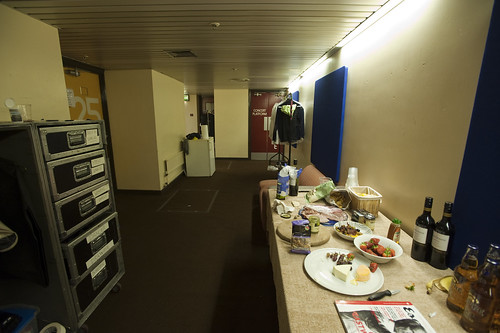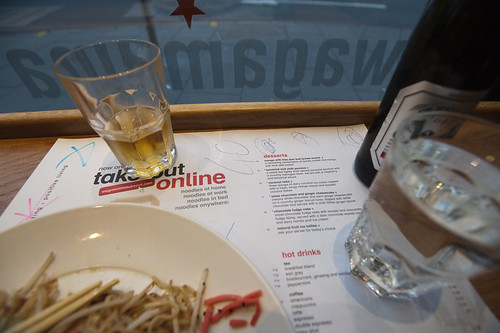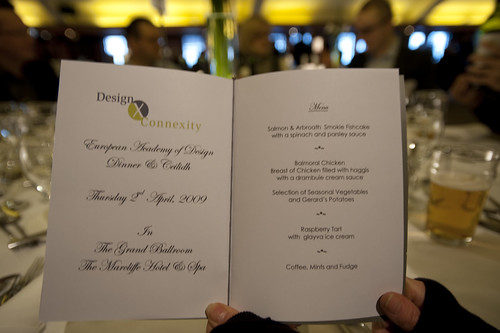Three ways observed recently to delivery food, in some sort of service stack hierarchy. Which got me thinking about food futures, generally. First, a sample of present food service and presentation protocols as depicted above.
First, catered in a way that provides the opportunity to pick and choose based on inspecting the available items.
Next, inspecting the descriptions of available items on a paper menu, that also conveniently serves two additional functions — as a place mat to sop up drinks spills and food that does not quite make it to the mouth (a distinct possibility when consuming noodle-y things with a fork). Second, it also serves as a marking pad with a number of unique attributes: to indicate when an ordering process has begun (the pink star) and when the meal is closed out and the check has been requested (the blue star); to indicate what is not available currently (item number written on the menu-mat and drawn when a “buster” mark — a circle with a line through it) which appears under my plate for item number 43 which, sadly, was what I wanted to eat; the menu-mat is also where one’s ordered items are written down in (to me) a barely legible set of chicken-scratches (upper right.)
Third, traditional, serif’d menu in a sit-down configuration, heavily serviced by waitstaff in a semi-formal, banquet setting. You wait for what has been determined to be your meal ahead of time. Interestingly, the young woman sitting next to me had to do a bit of dinner order off-roading, convincing the waitstaff to bring her the vegetarian plate. When you try and steer a pre-determined “on-the-rails” dinner service a bit off the tracks, things start grinding gears. This was possible to see in this context where the wiring had to be re-routed in various ways to accommodate this unexpected but relatively minor alteration to plans. (To those of you who have asked, the haggis was quite good, perhaps the formality of the context added something to an experience I genuinely feared. I thought quite seriously of deploying Mike Lewinsky’s powerful “Kosher Defense” which he painstakingly taught me after his experiences in China with the Rabbit Head appetizer. — I don’t think Mike’s China meal was in anyway a metaphor, btw.)
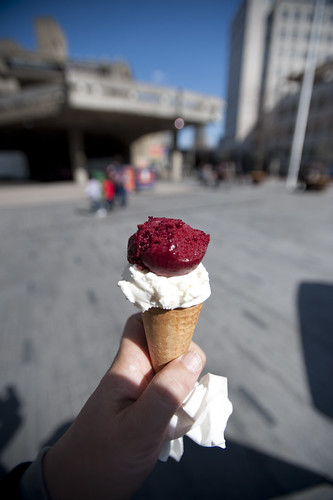
The dearth of street food in all of the cities I was in during that 12 days in the UK and Finland almost defines the Urban Scout’s conceptual boundary between countries in various parts of the world. There was street food during the day’s perambulation along the South Bank of a particularly pre-configured, organized and licensed sort. Despite that, the opportunity for Ice Cream in London in early April meant something. Besides these, the closest to genuine on-the-street food stalls was rather organized and festival-like. Which is fine. I mean — generally, I take the cautious Urban Scout approach to food consumption which is a minimum of experimentation, and smell but don’t ingest street-made street food.
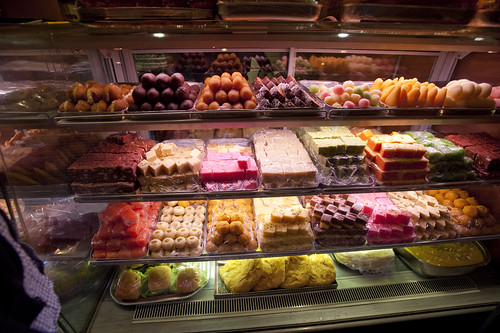
Thinking about food, and the future, and the future of food got me wondering about rather narrow future food imaginaries. It seems that there is basically food, also, in the future. Space foods of some sort or rudimentary staples. I collected a few science-fiction food future scenes from film that popped into my head right away. These are instances of rather stable food futures, consistent with today in a way that says, basically, food stays the same.

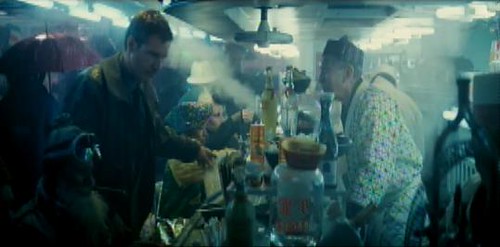
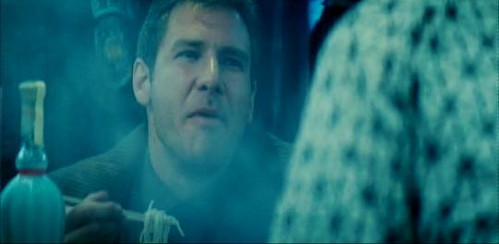
Ridley Scott’s production design and extrapolation of Los Angeles downtown (?) into the future fiction of the film has been praised for the way it captured something that was visually articulate — it is an evocative projection into a legible future world. Spoken language mash-ups, bustling crowds, density and thickness of all sorts — weather, advertising, etc. It’s worth a quick look of this food futures scene, which only serves as a prop to turn the drama a bit toward Deckard. The production design here, though, captures an imaginable setting and atmosphere.
Blade Runner by Ridley Scott and P.K. Dick. (Blade Runner Noodle Bar — Food Futures).
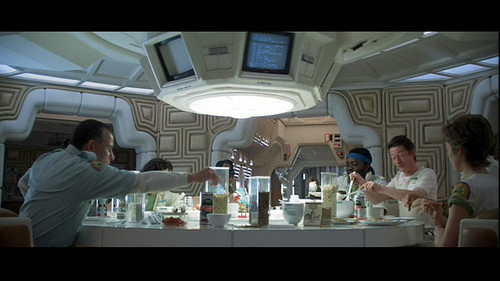

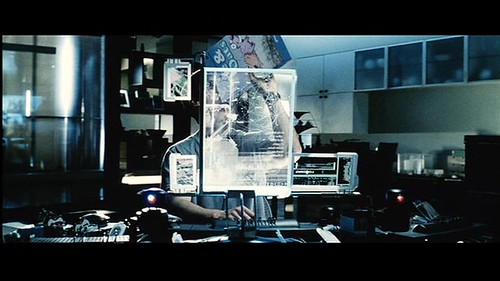
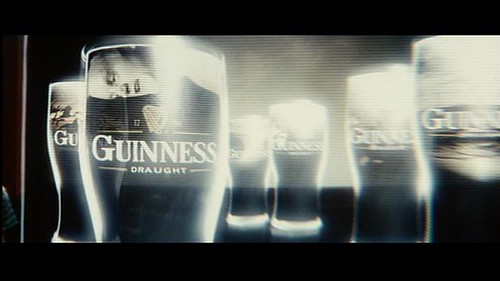
There are some future food imaginaries where we find quite stable futures. We still eat in the future, it seems. I left out the future imaginaries like Soylent Green where “we” (people) get eaten or are alien food. That’s for another consideration.
Why do I blog this? Curious interfaces between people and their food and meals observed while out and about as an Urban Scout. I t is interesting to think about the stability of food, despite the high-end explorations with various delivery mechanisms like aerated food products and other delivery protocols and fancy concoctions.
Distinctive future imaginaries for food are few and far between, best as I can tell just thinking about it. Food is delivered. Space food becomes the same food as today, only constrained by the limits of things like preparation, weight and, bleech..consistency. Food becomes, in the future imaginary, quite instrumental in its consideration of necessary intake and so forth. It seems strange to me that there are not more design fictions that shape design practices that are directly concerned with what food might become. Maybe it’ll be closer to athletic food gels, formulated by food scientists. Bio-chemical genetic foods and the like, taken to their logical and insane conclusion.
Continue reading Design Fiction Chronicles: The Stability of Food Futures
